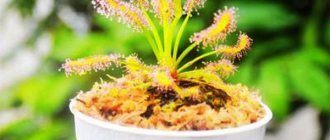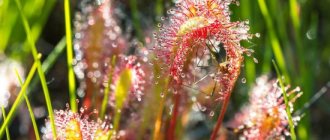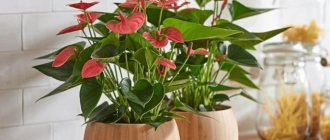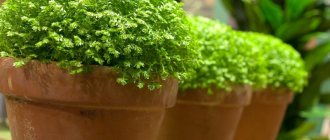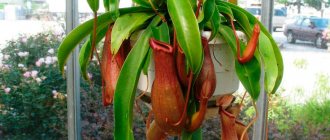The sundew flower is a very unusual plant, distinguished not only by its unique appearance, but also by its way of feeding: it is a predator that obtains the necessary substances by digesting captured insects.
The sundew has developed a whole set of adaptations. The villi covering its leaves produce a sticky substance to which small insects stick. Then the alkaloid (plant poison) produced by the sundew comes into play with a paralyzing effect, the leaf curls up, and the plant begins to digest its prey using special enzyme proteins contained in the juice. After a few days, the leaf unfurls and the sundew “goes hunting” again.
In nature, there are just under 200 species of this plant (1). Wild sundews are inhabitants of depleted soils, primarily swamps, from which it is difficult to obtain sufficient nutrients. It was precisely because of such difficult growing conditions that these plants were forced to develop a predatory mode of nutrition.
The greatest species diversity of sundews is observed in the tropics, however, certain types of sundew flowers are adapted to colder climates and are found in temperate latitudes, including in central Russia. They wait out the winter in the form of overwintering buds, which “hide” deep in the sphagnum (2).
Several types of sundew flowers have been introduced into indoor culture and are popular among lovers of exotic houseplants.
Sundew plant: the original carnivorous houseplant
Among predator plants, the sundew rightly claims to be the brightest and most expressive beauty.
This plant attracts, first of all, its unusual textures and play of colors. But the feeding mechanism of this swamp and quite hardy miracle is so exotic that it is very easy to forget about sundews as plants, primarily ornamental ones. Sundews require the creation of special conditions of detention; they are quite demanding in terms of humidity, but they are easier than many rarer indoor predators to grow in ordinary living quarters. And caring for them cannot be called very difficult. Sundew plant: the original indoor predator.
How to feed sundew
The plant does not need any fertilizers. The sundew will quickly die from them.
The natural food for sundews is insects. But you shouldn’t help the green predator and constantly feed it living creatures, especially large ones. Let the plant hunt on its own. In winter, an insectivore can easily do without a meal.
Sundew caught an insect / carnivorousplantresource.com
Do not feed sundew meat or other foods. This will lead to the death of the plant.
Destroy pests
